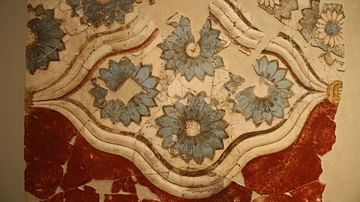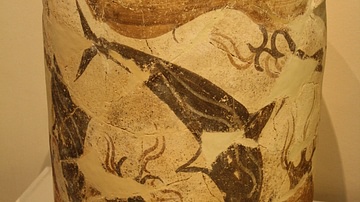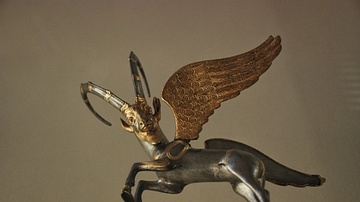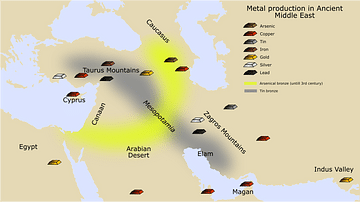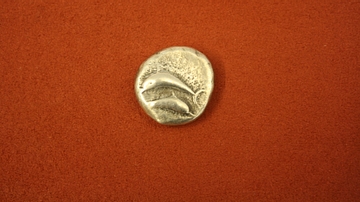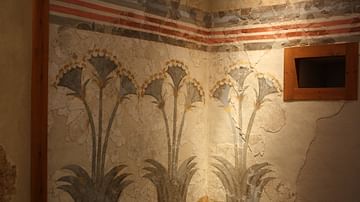Illustration
A gold ibex figurine from Akrotiri on Thera (Santorini), 17th century BCE. The figurine was discovered in 1999 CE in mint condition having been originally placed inside a wooden box within a clay chest. It is hollow and was made using the lost-wax technique. The legs, neck and tail were soldered on and finishing touches were added using a small hammer, indentations from which remain visible. (Museum of Prehistoric Thera).
Cite This Work
APA Style
Cartwright, M. (2013, July 29). Gold Ibex, Akrotiri. World History Encyclopedia. Retrieved from https://www.worldhistory.org/image/1358/gold-ibex-akrotiri/
Chicago Style
Cartwright, Mark. "Gold Ibex, Akrotiri." World History Encyclopedia. Last modified July 29, 2013. https://www.worldhistory.org/image/1358/gold-ibex-akrotiri/.
MLA Style
Cartwright, Mark. "Gold Ibex, Akrotiri." World History Encyclopedia. World History Encyclopedia, 29 Jul 2013. Web. 19 Apr 2024.

